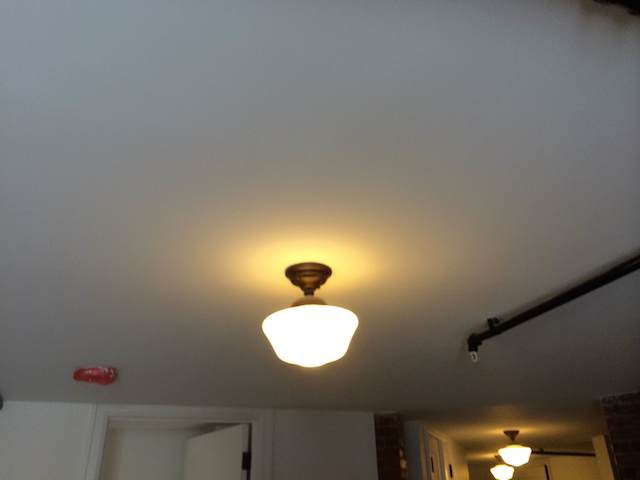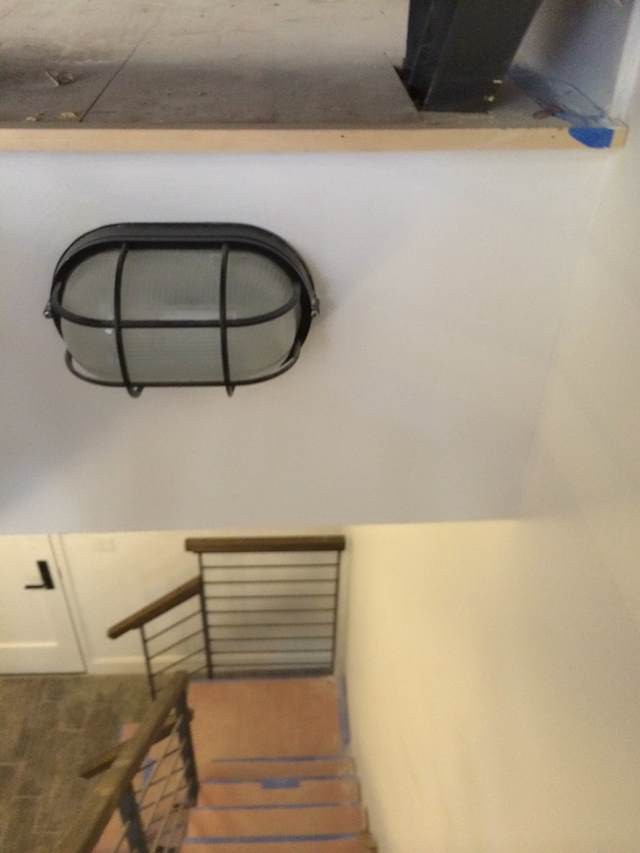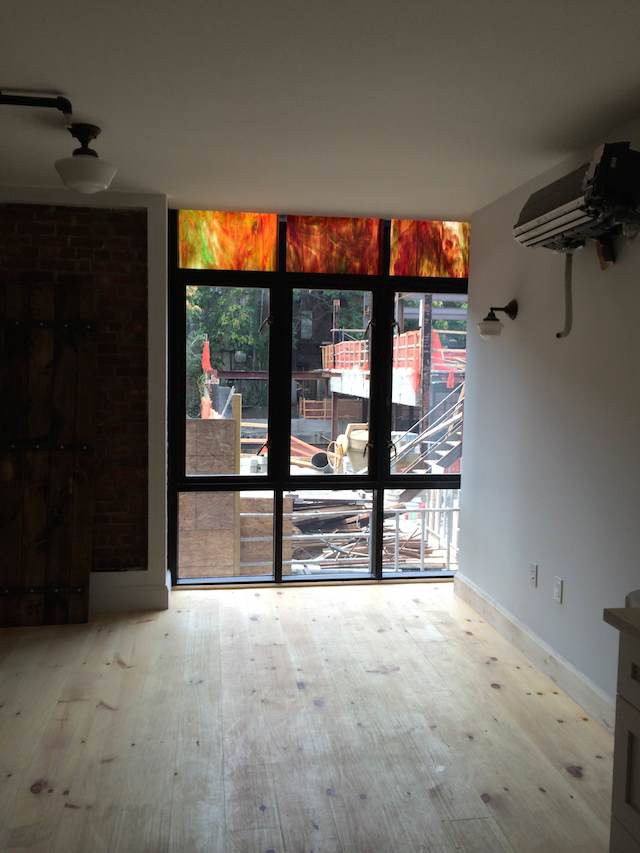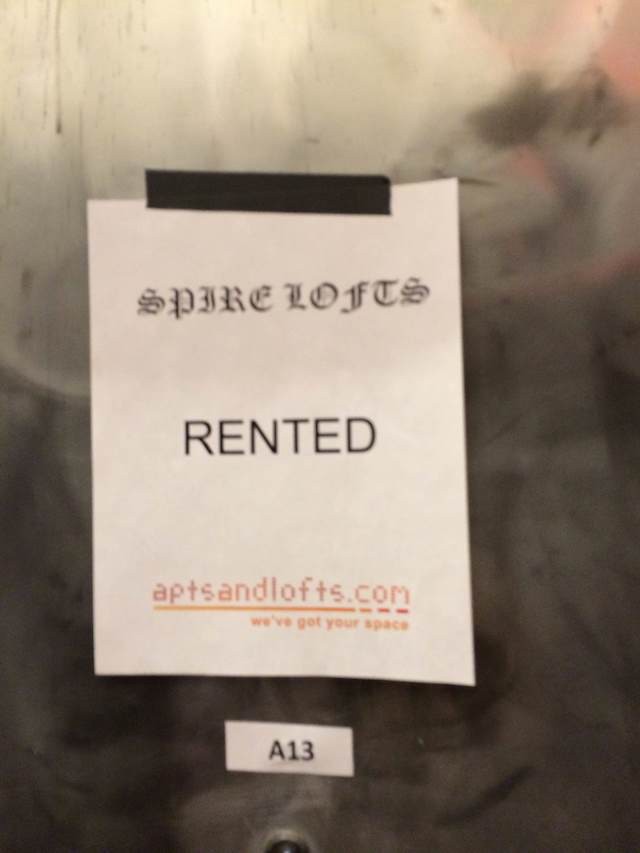Brand Evolves
The New York Times nervously ponders the evolution of a Harlem, a neighborhood whose core now has fewer black residents “than at any time since [Charles] Rangel was first elected in 1970” and is now eleven percent white.
More than ever, Harlem is less a clearly identified voting bloc than an idea. A brand. … Viewed from on top of those tour buses, Harlem is banking on a future tied to its legacy. Its currency is authenticity, a term that Harlem stakeholders added to their conversations as though pouring hot sauce and syrup over an order of chicken and waffles.
Leaving aside the problem with this imagery, this is (in theory!) in part the kind of transformation that every neighborhood with a name sort of desires, the transmutation into a idea that is boundless — a hashtag. But it’s curious, in some ways, to marvel at the notion of Harlem as a legitimate branding exercise — that is, one that is more brand than any other function of its identifier — as a new thing. The Harlem brand, one might say, has always been #strong, for better or for ill, and seemingly more elastic than a neighborhood whose name merely signifies “good schools,” or “annoying weekend crowd” or “a real estate broker just thought of this.”
The fear of a brand planet is rooted in the notion that the transubstantiation from place or thing to Brand necessarily displaces the thing it represents, a fear that manifests most visibly as an obsession with authenticity — the irony being, of course, that the quest for authenticity is the primary marker that a thing has become nothing but a brand.
Compare and Contrast: Emily Gould's "Friendship" and Amy Sohn's "The Actress"
Compare and Contrast: Emily Gould’s “Friendship” and Amy Sohn’s “The Actress”
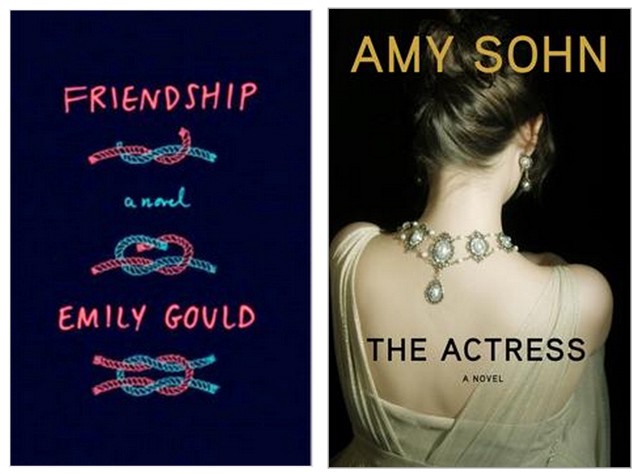
It’s publication day for both Amy Sohn and Emily Gould! Because they’re both women, we should look inside these two new novels and see what they have in common! Isn’t that the totally obvious and meaningful thing to do if you sit back and think about it for a minute???
• Both women.
• Written in English.
• Books are printed on off-white-ish paper with black-ish ink.
• Both contain women speaking out loud sometimes.
• Neither are Lena Dunham somehow???
• The first word of both books is “the.”
• Emily’s is blurbed by three men and one woman and Amy’s is blurbed by all women (ooh and one man! The symmetry!).
• Both authors clearly have loose morals because they have spoken too frankly in public, particularly about sex, and therefore should not be taken seriously.
• Both books seem to be demands for attention, because they were both published.
• Neither are Mira Jacob, who also is a woman with a book out today, called The Sleepwalker’s Guide to Dancing, but she gets compared to Jhumpa Lahiri in Kirkus instead, because, whispers, you know, her parents are from India, so she’s definitely not Lena Dunham, even though she grew up in New Mexico and went to Oberlin and lives in Brooklyn just like everyone else.
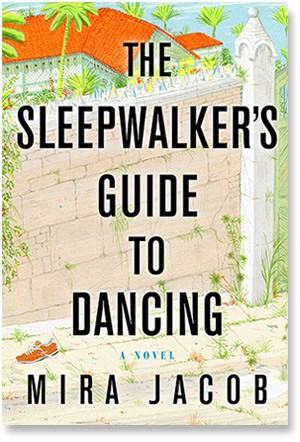
Why not buy all of them — here’s Emily’s and here’s Amy’s and here’s Mira’s — and see just how much these women books have in common! Or just buy one, surely they’re totally identical in most ways.
BONUS ROUND:
Here’s Emily and Amy in cahoots four years ago.
Film Demonstrably Superior
“There was more data pushed through on this film than on anything we’ve ever done.” Data always wins. How else to explain Transformers $300 million opening weekend? The people demand data in all forms. So give them more data! Feed it through every available input.
This Social Network Changed How News Works. But Then It Made Some News Of Its Own.
The first mainstream story about the now-notorious Facebook “psychology experiment” study was cautious, even sober. “Even online, emotions can be contagious,” New Scientist’s headline said. It maintained its tone:
[Facebook] manipulated which posts showed up on the news feeds of more than 600,000 Facebook users. For one week, some users saw fewer posts with negative emotional words than usual, while others saw fewer posts with positive ones.
…
People were more likely to use positive words in Facebook posts if they had been exposed to fewer negative posts throughout the week, and vice versa. The effect was significant, though modest.
This story was doomed, in the internet sense, from the start: It was a news brief, obviously written for print, summarizing a study.
The day after it was posted, and nearly two weeks after a cluster of similar stories had been ignored, it was picked up, repackaged, and optimized by a handful of other outlets, who saw in it both an interesting story and an opportunity. Among the first was Animal, which found the heart of the story: “Facebook Experiment Manipulates Emotions Of 600,000 Users,” was its packaging. “Apparently what many of us feared is already a reality: Facebook is using us as lab rats.” This version appears to have been shared a healthy but modest number of times. A hit, not a sensation.
The final refinement, or the lucky one, came from The A.V. Club. With an item that aggregated the Animal post while linking around the New Scientist story to the original study, the site hit gold: “Facebook tinkered with users’ feeds for a massive psychology experiment” has been shared on Facebook over one hundred thousand times; the New Scientist story, even after receiving credit in dozens of popular followup stories, has been shared about a thousand and a half times.

Facebook doesn’t intentionally reward any particular editorial style; it mostly seems to promote content that causes people to use Facebook more vigorously. New Scientist’s story, as presented, might coax a post out of a few people, but its headline and tone demand reading and analysis — you have to work a little before arriving at an emotional response (another way to describe it is boring). The content of the The A.V. Club’s story is a fair enough representation of its subject but the presentation teeters on that sharp, high, slippery peak of sʜᴀʀᴇᴀʙɪʟɪᴛʏ: It leaves something to the imagination, so you’ll probably end up stopping to look at it; at the same time, it contains enough information, after a quick scan, to pass the engage-without-reading threshold. Facebook tinkered with OUR feeds for a WHAT experiment? Haha, dang, I knew it. Commented, shared, and read (maybe).
Enough publishers — basically all? — are trying to pull off this new aggregation balancing act, between reporting and aggregation and uncanny social media colloquialism, that intentionally and even correctly assembling a story to feel Facebook “native” doesn’t necessarily work — there’s stiff competition, and the best, biggest internet sensations are still accidents (burn down the whole damn thing the day this ceases to be true). The difference now is that you don’t have to repackage things for the dumb search machines, you repackage them for the strange shapeshifting link bazaar where most people share stuff online, with its house tone and rules and mechanisms and limits.
The media narrative on this Facebook story is getting ridiculous pic.twitter.com/fhjum1BYd0
— Christopher Mims (@mims) June 30, 2014
Facebook provided the context in which this “ridiculous” narrative was cultured and incubated; it also provided the environment where it was able to flourish. The countless followup stories from this weekend, advancing but mostly rehashing the narrative created by Animal and perfected by The A.V. Club, are even more a product of their environment. A viral, newsy story on Facebook creates both a genuine cultural sensation, because Facebook is huge, and a short-term traffic bonanza for anyone who happens to be nearby. The latter effect, however, might be incidental: Facebook is interested in stories that make people use Facebook more. That these stories produce external traffic is at best a fringe benefit and at worst an inefficiency.
What better way to get people commenting, sharing, and ENGAGING than a sensational story about the place it all happens to start with? If News Feed could dream, it would dream of stories like this. Which isn’t necessarily damning, because this is a pretty good one: Big scary Facebook screwed around with users’ emotions just to see what would happen, and because it could (and also, in part, to combat another narrative about Facebook, that constant exposure to friends’ happy feeds causes depression). That’s crazy, that Facebook would experiment on us like that.
I knew Facebook was weird, but the study it did without even telling us? Wow.
I can’t believe how Facebook turned us into a psych experiment.
And you won’t either.
Update: Link added to the The Daily Dot’s early coverage of the study
New York City, June 29, 2014

★★★★ A little yellowish cumulus was showing in the distance up Columbus Avenue. There were some sort of clouds directly overhead in the overall blue, but it was too bright to look at them. It had taken real resolve to put on sunscreen and get out the door. People in medals and bibs, more motivated people, had already finished their morning exertions and were on their way out of the Park. A blur and a shine lay on the Sheep Meadow. Strollers clustered under the trees; sunbathers dispersed themselves in a slowly accumulating gradient fill. The sun raised damp vegetal fumes out on the open grass. The two-year-old had picked up a stick and he exulted in it all the way across the meadow, till his older brother felt obligated to find one of his own. On the far side, a low white hump of clover rose beside the low gray humps stone pushing through the lawn. A dusty-looking bee worked the blossoms. The bright veins in the rock gleamed like glass. Under the oaks there were plenty of sticks, enough for the two-year-old to start passing them out: “This can be your stick! I found you a stick!” There were sticks for sword-fighting, for jabbing into the mulch, for pointing execution-style, as an imaginary blaster gun, at the head of a blameless little stranger. Here and there also were plastic forks, a puzzle piece, a wooden ice cream paddle stained with chocolate. Two abandoned beer cans showing no visible punctures. Dragonflies passed three or four yards overhead. A white passenger jet, a dark helicopter, and a bunch of lost blue and white balloons went their separate ways at their separate altitudes. Amplified music, hardly more than a throb or squeezing sensation on the air, carried from somewhere out of sight, probably in the east. The shade was cool and filled with a floral scent, a paradisal subset of the available conditions. On the way back, along 67th Street, a dead fledgeling lay stiffly on its side. Sundown brought a descending crescent moon, thin and melon-orange.
OREO Minis: Mel's Mini Mini Mart
OREO Minis: Mel’s Mini Mini Mart
by Awl Sponsors
What’s in Mel’s Mini Mini Mart? One mini wonderfilled thing, OREO Minis. One day, a family discovered the shop, something that others had not. They filled up their van with boxes and boxes of the tiny treat and the news of Mel’s started to spread worldwide, now everyone knows how much good is inside. The moral remains it’s not how you’re built, it’s what’s inside that makes you wonderfilled.
Get more mini goodness at http://www.oreo.com/minis/
Against 'Alan'
by Matthew J.X. Malady
People drop things on the Internet and run all the time. So we have to ask. In this edition, writer Alan Hanson tells us more about why the name Alan is terrible.
my dad is getting mad at me for shitting on his middle name pic.twitter.com/7DMAgcPOXm
— Swizz Keats (@iluvbutts247) June 9, 2014
Alan! So what happened here?
I was on my lunch break and texting my dad when that thought crossed my mind, definitely not for the first time. My dad’s name is Kirby Alan Hanson, so that’s where my name comes from, and I’m pretty sure there isn’t any deeper connection to anything else. Growing up, I thought it was pretty great that my dad’s name was Kirby. I still do. I’m not really sure why, but it’s more unique than most names and sounds pretty cool to me. “Alan” has always paled in comparison. It’s a fine middle name. Which kind of speaks to its lackluster quality. Also, maybe this is some delusion of mine, but it seems it’s easier to get published the more interesting sounding your name is.
How exactly *is* Alan lame?
It just feels so boring to me. Like I said in the text, a step-dad name. It’s a first and last name, it doesn’t have any strong consonants or phonetically pleasing qualities, it doesn’t really mean anything. It’s completely workmanlike without any edge.
I remember meeting a friend of my grandfather’s when I was younger, and it was the first time I’d met another Alan. He was a 50-year-old version of Kip from Napoleon Dynamite. I immediately disliked his vibe and associated it with the name. Alan Parrish from Jumanji? Dweeb lord.
The shortened version of it is Al, which is just one of the most godawful nicknames of all time, unless you’re a character on Happy Days.
Lesson learned (if any)?
My father is still awfully proud of his decision to name me Alan Michael Hanson, a collection of heritage-less white-people designations, and he assumes I am high on the reg.
Just one more thing.
People I haven’t spoken to in years love to post that stupid-ass video of a prairie dog saying “Alan” over and over again on my Facebook wall.
Matthew J.X. Malady is a writer and editor in New York.
Solemn Ritual Threatened

The history of alternate-side parking in New York City is medium-length and not all that glorious, but the particular way that it warps space and time has produced not so much a peculiar set of rituals and customs as wholly alternate ways of living — existences that could be threatened by a proposed rule change that would allow drivers to swiftly re-park their cars after a street sweeper has passed. The rule change, provided one could verify that the sweeper has indeed passed, is logical on its face: Why shouldn’t a car be able to immediately return to its spot once the impetus for its removal has passed?
But ask this: What are we losing by making car owners’ lives less miserable in this city? I mean, why even own a car in New York if agony isn’t the one emotion that your heart truly longs to feel? No, it’s clear that alternate-side parking demands the full ninety minutes of solitude each day, contemplating the fullness of one’s car-owning existence.
A Photo Tour of Williamsburg's Latest Real Estate Travesty

Today’s great story on New York City as real estate investment and money laundering capital of the world has lots to recommend it, but in particular it confirms one of those things you already know but don’t have the numbers on:
The Census Bureau estimates that 30 percent of all apartments in the quadrant from 49th to 70th Streets between Fifth and Park are vacant at least ten months a year.
Amazing. Such validation! The rest of us, well… we work here, so we should probably have some place to sleep.
The Spire Lofts in Williamsburg have been going on the market in waves, with an open house held this weekend for most of the units. It has “three floors” (double height floors, basically, and also no elevators), each floor organized by a long, straight and rather creepy central corridor. (The building’s top floor, full of skylights embedded in its plastic fake slate roof, is going last, and should be inspected and approved and ready for viewing in about two months.) “The Spire” was formerly St. Vincent De Paul Church, located right on North 6th Street between Bedford and Driggs, and the exterior of the building is entirely churchy. Available apartments now range from $6000 a month to $11,000 a month (but no fee!). Poking through the building, the fascinating if weird idea of a church conversion becomes even weirder when suddenly you look around an apartment and discover there… are no closets. And maybe nowhere to live.

This was the lone closet, in the kitchen, of a 1.5 bedroom. Strange furnishings abound, making every apartment feel identical yet strangely different: Weird sliding wood doors covering the glossy brick windowless bathrooms, other construction sites outside almost every window (“but they don’t work on Saturdays!” we were told, which means… they work on Sundays), the stairs on which you have to dodge and weave to not crack your head open, kitchens that you could maybe get a small table in, strange washer and dryer doors hidden behind other doors on tiny landings at the top of stairs, exposed electrical conduit to bizarre lighting fixtures…. Awkward tortured spaces, with walkways, or rooms that “could” be bedrooms, or… could not be. “Could I get a closet unit into that strange angled high space above the kitchen?” Maybe so.
The obligatory and somehow lonely wine rack atop every refrigerator. You like wine? Of course you like wine. “You can’t call that a bedroom because it doesn’t have a window” is something you might be told.
It photographs quite attractively, if you’re trying to sell the apartments. Actually being in them is something else.
These are apartments for people who don’t have anything. They’re nothing that several dozen Ikea furnishings couldn’t make complete. They are apartments for people who will wake up and wonder: Where am I going? What am I doing here?


